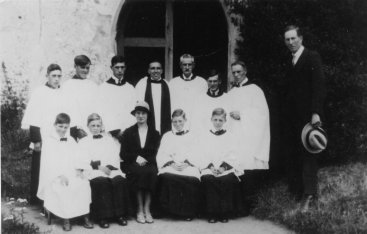
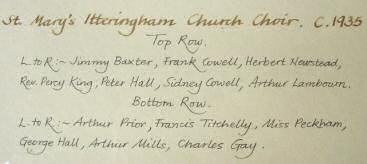
|
|
Peter
Hall the village blacksmith is 5th from the left
on the back row |
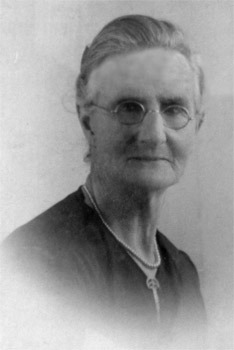 |
Peter Hall's wife Georgina |
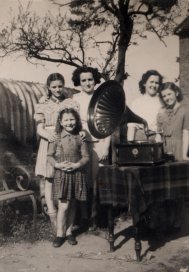
|
Prior and Hall families at Robin Farm for Mary Prior's birthday party
in the late 1940s
Mary Prior (back left) Nancy Prior (back centre) Peggy Prior (back right) Janet Hall (front left) Mary Hall (front right) |
The Village Blacksmith The Hall family have lived in Itteringham for generations and for over a hundred years had the smithy in the centre of the village. The Old Forge House is still there but long since a private house. The site is not the original smithy - an occupational hazard means that there were at least three sites over the last 400 years as earlier ones were moved or burnt down!
|
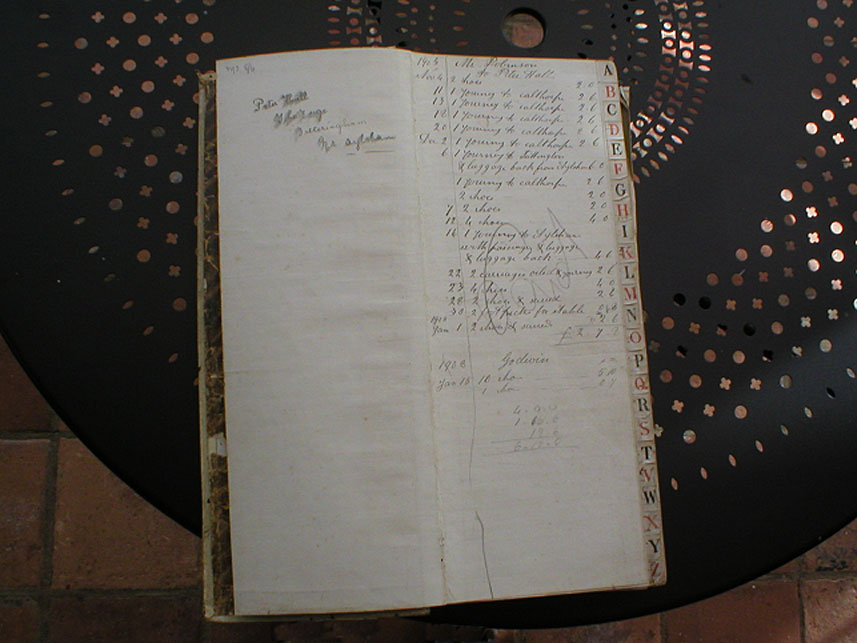 |
The ledger has parchment-covered boards and deleted names of customers on the front cover. Inside the front cover, the price 8/6 is written and Peter Hall, The Forge, Itteringham nr Aylsham |
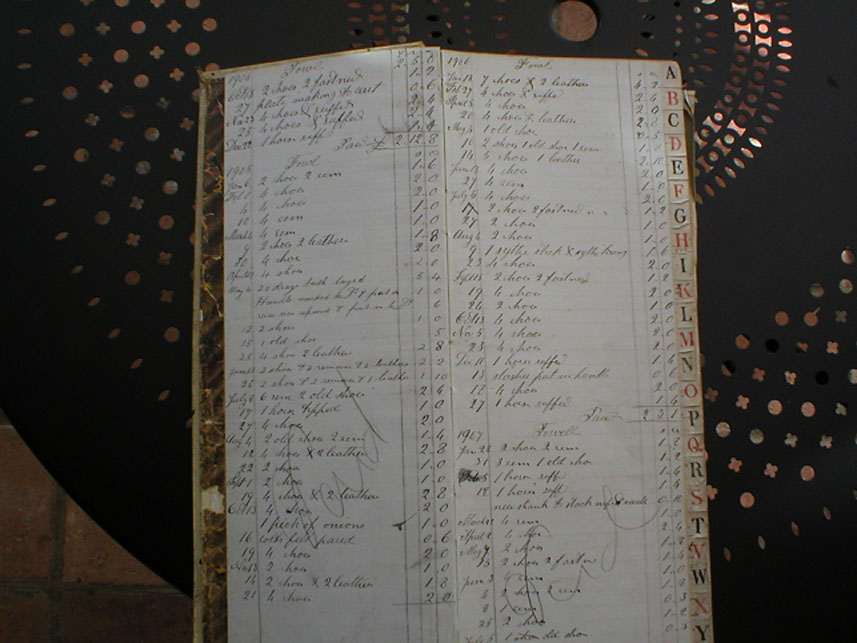 |
Shoes for horses could cost 1/- more if the animals were Bad or Greasy |
Most of the entries are for agricultural items : muck croombes [long rake-like tools], coulters [the iron cutter at front of a plough], howe [hoe], harrows, varrell [?virole, an iron band or ferrule], ringles, essle parts, trumbell wheels, swavells [?swivles - horse-harness couplings], brads and hempeltries [hample trees- the bars on the plough], sythes and scimmers - a wonderful list of Norfolk words and spellings of metal tools and fittings. Grassing-dog appears frequently but fortunately also as greasen dog and greasing dog! Perhaps the most painful sounding entry is “woolf teeth taken out.” (See explanation below.)
|
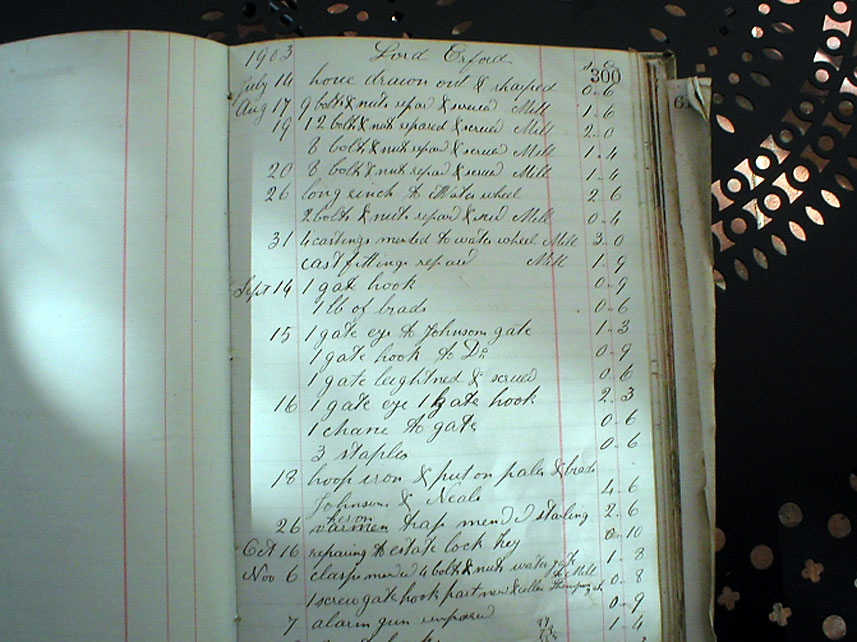 |
Work for Lord Orford in 1903, including repairs at the mill |
Minor work at Blickling Mill is also noted in 1897 and 1924 and at Itteringham mill 1903,1916-1918 and 1932. Lord Orford’s keepers were also kept busy with repairs to the “shoting cart” and rabbit traps.
|
The wolf tooth, if the horse gets any at all (this varies), is a sharp little pointy tooth just in front of the row of cheek teeth. They are rudimentary premolar teeth with no real function in the modern horse. The size of both the crown and root of the wolf tooth varies a great deal. It is considered to be a permanent tooth as we don't see any shedding. A horse can get from 0-4 of these teeth, and they are usually removed as they are often sharp, and because of the bit, they can cause problems in the modern sports horse. The wolf teeth can also be unerupted or "blind" and can be felt as little bumps in the gum. Blind wolf teeth can also cause soreness in the gums and cause problems as they are often dislocated a little further into the space between the incisors and the cheek teeth where we put the bit. We most often see them in the upper jaw, but in some horses (especially the standardbred horse) it is not uncommon to also get wolf teeth in the lower jaw (and often unerupted). Eruption of the wolf teeth usually occur from 5-6 months of age. They are usually removed to avoid problems later. |
My great grand father was George Martin Hall who was one of those who moved to London. He was the brother of Peter Hall the blacksmith. I hardly knew my grandfather James who died when I was very young so only had recollections from my father to go on. The website has helped enormously and I am looking forward to visiting Itteringham some time. |
My name is Tom Jacobson and I live in Spicer, Minnesota, USA. I am a distant relative of the Hall family of Itteringham. My great-great-great grandfather was Henry Hall. His daughter, Harriet, married Lot Plowman in 1842 and they emigrated to America sometime in the 1840's. Their daughter, Rebecca, was married to Frederick Stonefield; their daughter Lillian married Oscar Tommerson, and their daughter Pearl married Merle Jacobson. Pearl was my mother. |
I visited Itteringham at the end of May for the very first time with my husband and sister and found the village and surrounding area very beautiful. My sister and I were able to see our family graves in St Mary's Church and see the house that was formerly the forge where my great uncle Peter Hall worked. The day we left I purchased a copy of the book Good Neighbours from Maggie Vaughan Lewis and wonder if it is possible to tell her via this email how much I have enjoyed reading it. The book covered so much of the daily life of the village and I now know so much more of Itteringham. Hope to visit again before too long. |